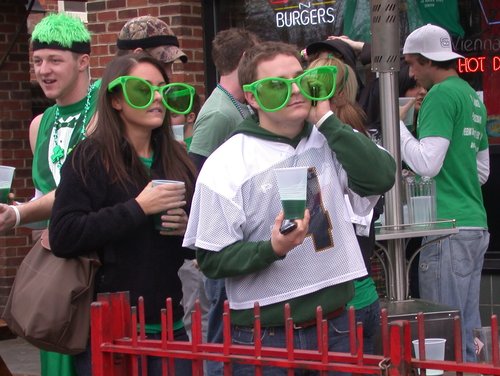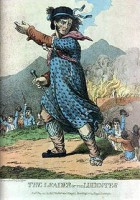Lily Hoang
https://literature.ucsd.edu/people/faculty/lhoang.html
Lily Hoang has published some books and won some awards. She is Director of the MFA in Writing at UC San Diego.
https://literature.ucsd.edu/people/faculty/lhoang.html
Lily Hoang has published some books and won some awards. She is Director of the MFA in Writing at UC San Diego.
So, I’m teaching a grad-level fiction workshop for the first time next fall. I’m excited and nervous. It feels like a big deal. In my pedagogical statements, I write about how many fiction students don’t know how to read. That is, they read like they’re lit majors: they read for analysis and to say something clever about the text. (I was no exception before and during my MFA.)
BUT, but, writers read in a fundamentally different way. We read with our own writing in mind: what works, what doesn’t, what should we take from this writer, what does this writer do that we also do that fails, etc.
My undergrad fiction workshops are always very reading heavy. We read something like 8-10 books. Every book comes with some kind of “craft” lesson. I attempt to teach students how to read as a writer. Mostly, it works.

Every year, the New York Public Library & Ethan Hawke award $25k to a writer under 35 based on a book she published the previous year. Here’s the full press release. Here is this year’s list:
Citrus County by John Brandon (McSweeney’s)
Vida by Patricia Engel (Grove Press)
The Instructions by Adam Levin (McSweeney’s)
Death Is Not an Option by Suzanne Rivecca (W.W. Norton & Company)
Kapitoil by Teddy Wayne (Harper Perennial)
What do you think about this list? What have you read on this list? Who “deserves” it? Who’s missing? What was your favorite book published in 2010 written by a writer under 35?
People love to make equivalencies. For instance, Stuart McLean is the Canadian Garrison Keillor, or The Agenda is the Canadian Charlie Rose.
Obviously, equivalencies are problematic. The Canadian anything seems to be paler version of the American thing. (Call me nationalistic.) That is, they aren’t really equivalent. And yet, there seems to be some value in these equivalencies, right? (Maybe I’m wrong.)
That being said: Is DFW the American Roberto Bolano?

I’ve been thinking about pissed off women lately. Or, rather, I’ve been thinking about why writer-artists like to portray women as pissed off, including female writers. Are women really as angry as art and pop culture say? If so, aren’t men equally angry?
Think Medea.
Think Clytemnestra.
Think Gertrude (as in Hamlet’s mother, not my cat).
Today is the very last day of my 20s. I feel like a hot wreck. Whereas I know that age doesn’t really mean anything and we age every single fucking day, it seems monumental.
I remember one of the first conversations I had with Joyelle McSweeney. I was 25. I had just graduated with my MFA. I hadn’t even submitted my first book manuscript for publication (though I was getting ready to), and she said something like: “Oh, I’m so old in comparison, it’s ghastly: I’m thirty!” In my head, I thought to myself: “Fuck, if I do even half of what Joyelle has done by the time I’m thirty, I would be grateful!”
Well, boys and girls, here it is: thirty.
In their song “Hahahaha jk,” Das Racist proclaims, “We’re not racist: We love white people!”
[Sorry, I wanted to find a video of a live performance, but YouTube is sometimes inadequate. At least you can listen the song?]
I love Das Racist. They are smart and clever and funny and their lyrics are just plain fantastic. But that one line, it sticks with me. Partially because it’s true, partially because it speaks to racial issues in a very pointed and problematic way.
Imagine if Eminem had a lyric like: I’m not racist, I love black people. How many people would be pissed? (Come on. It’s not like we don’t all know it’s true!) But because Das Racist has at their easy disposal the “race” card, it’s not only funny, it comes to embody a certain degree of truth.
As a woman of color, I can say: I’m not racist, I love white people. No one would call me racist, at least not to my face.
Yesterday, I went to this really amazing performance art thing.
Yesterday was also St. Patrick’s Day, an international day of drunken publicly-performed assholery.
 Both are public performances, but only one is considered art.
Both are public performances, but only one is considered art.
Is the art one considered art because it is intentionally performed? Isn’t drunkenness also intentionally performed?
Back in 2001, I took my very first fiction workshop. It was with Catherine Kasper. I’d never written a short story before. I was a junior. My first story submission was terrible, truly terrible.
Despite my really shitty story, Michael Stewart was nice to me.
I thought he was the best writer in class. (And he was.) And there were some spectacular writers in class.
Over the past decade, Michael and I have consumed a lot of coffee and breakfast tacos together. We have played many chess games and go games. We have seen each other’s heartbreaks and victories.
Michael Stewart is a charming man and a charming writer. His first book, The Hieroglpyhics, is out now (and can be purchased here) with Mud Luscious Press.
The Luddites were a group of British textile workers in the 19th century who destroyed their newly automated mechanized looms. They were afraid of the advancement of technology and how it would impact their jobs.
 The Luddites derived their name from Ned Ludd. According to the mythology, in 1779, Ludd smashed two knitting frames, either because of a “fit of passion” or because he was lazy and didn’t want to work or because some kids were making fun of him.
The Luddites derived their name from Ned Ludd. According to the mythology, in 1779, Ludd smashed two knitting frames, either because of a “fit of passion” or because he was lazy and didn’t want to work or because some kids were making fun of him.
From then on, if a loom was destroyed and/or sabotaged, the workers would blame “Ned Ludd.”
By the time the Luddites formed in 1811, Ned Ludd was a mythological figure.
Ned Ludd may or may not have ever existed.
Ned Ludd may have been a lazy dude who didn’t want to fucking weave anymore, so he smashed his loom. And the Luddites named themselves after him. READ MORE >